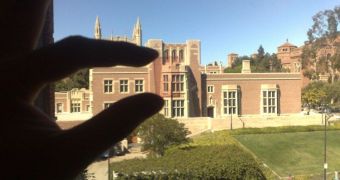A group of engineers at the University of California in Los Angeles (UCLA) says that smartphones and laptops of the future may be capable of replenishing their batteries from the environment. The team is working on a method of transforming the devices' LCD screens into energy-harvesting instruments.
According to the experts, the new technology allows liquid-crystal display (LCD) screens to capture ambient light, sunlight and their own backlight, and convert it into usable electricity. This can be done by building polarizing organic photovoltaic films directly into the screen.
The research group, which is based at the UCLA Henry Samueli School of Engineering and Applied Science, says that laptops and smartphones of the future will be capable of taking care of their own energy requirements, without bothering their owners to connect them to a power outlet.
In the sense that the team is using the thin film, energy is both harvested and recycled. Even the light that the LCD themselves give can be recaptured and stored back into the batteries or accumulators.
“I believe this is a game-changer invention to improve the efficiency of LCD displays. In addition, these polarizers can also be used as regular solar cells to harvest indoor or outdoor light. So next time you are on the beach, you could charge your iPhone via sunlight,” says researcher Yang Yang.
The expert – who holds an appointment as a professor of materials science at UCLA Engineering – was also the principal investigator on the new study. Details of the new work appear in the latest online issue of the esteemed scientific journal Advanced Materials.
“In the near future, we would like to increase the efficiency of the polarizing organic photovoltaics, and eventually we hope to work with electronic manufacturers to integrate our technology into real products,” Yang explains.
“We hope this energy-saving LCD will become a mainstream technology in displays,” the expert says. “Our coating method is simple, and it can be applied in the future in large-area manufacturing processes,” adds UCLA Engineering postdoctoral researcher and lead study author Rui Zhu.
Early analyses indicate that the polarizing organic photovoltaic films that the team included in their device are capable of harvesting as much as 75 percent of the photons that the LCD screen releases.
Given this high level of performance, it stands to reason that combining recycling with harvesting (sunlight and ambient light) could lead to devices that largely take care of their own needs. Users may still need to charge their mobile devices, but only once in a while.
Intel and the Office of Naval Research provided the funding for the new UCLA investigation.

 14 DAY TRIAL //
14 DAY TRIAL //